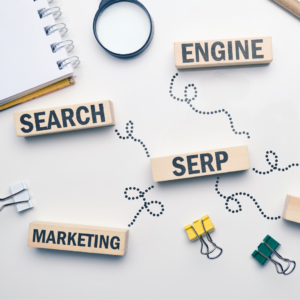In today’s cutthroat retail world, keeping your best workers is getting harder—and more crucial—than ever. Think about building a team that not shines in customer service but also stays put cutting down on the endless cycle of hiring and training. This piece looks at smart ways to keep staff that can change your retail workforce from a constant churn to a steady fired-up team. If you’re dealing with lots of people leaving or just want to keep your star employees happy, these down-to-earth tips will help you create a loyal driven workforce that pushes success. Are you set to shake up how you keep your employees? Let’s jump in!

What Are Employee Retention Strategies?
Companies need ways to keep their workers happy and motivated to stop them from leaving. These plans, which help keep employees around, matter a lot. A good approach to keeping staff starts with hiring the right people and continues with smart management that builds loyalty. In today’s job market, which can change, it’s more crucial than ever to have good plans to keep workers. It’s like creating a strong team where everyone feels valued. This is important in retail where tough schedules and lots of competition make it vital to have a solid plan to find and keep workers interested. Knowing how to look after your workforce with care is key.
A winning strategy is to give employees chances to grow. When workers see a future in their roles, they’re more likely to stick around. Also, boosting job satisfaction through flexible work choices and ways to show appreciation can have a big impact on keeping staff. You can do this by setting up clear paths to move up and offering ongoing training. This shows your team that you value what they can do and are ready to invest in their future.
Why Employee Retention Matters in Retail
Employee turnover in retail can be costly. A well-structured onboarding process is vital as it equips new hires for their roles and impacts their long-term satisfaction and commitment to the organization. Keeping an eye on your employee retention rate can offer valuable insights into how effective your retention strategies are. Job satisfaction among employees is key to preventing turnover and keeping staff. Each time someone leaves, you incur costs in both time and money to find and train a replacement. Research indicates that replacing an employee can cost up to 20% of their salary! This not only strains your budget but also disrupts team dynamics. Frequent employee departures can also affect customer experience, as they prefer to see familiar faces when they shop. So, why not engage your workforce with an effective HR strategy?
By adopting workforce development techniques, such as providing flexible schedules or recognition programs, you can foster a workplace where employees feel valued. It’s about cultivating an environment where people look forward to coming to work each day, confident that their efforts will be recognized. Understanding the reasons behind employee departures, such as insufficient pay or poor management practices, can help you tackle these issues and improve your retention strategies.
Key Retention Strategies for Retail
You can take some hands-on steps to boost employee retention in retail. Begin by supporting your team with methods that deal with what they need and worry about. Making a full employee retention plan can help you tackle the exact problems your workers face. Here are some key ways to think about:
Provide training and growth chances: Workers who can learn and develop tend to stick around. Consider starting an ongoing education program, like our Talent Infrastructure and Acquisition for Retail Course. Well-crafted training programs can also boost staff retention by giving employees the know-how to succeed.
Encourage worker involvement: Help your staff connect with the company’s purpose. One good way to do this is to set up regular feedback meetings and acknowledge their work. Creating a strong company culture through inclusion and open communication is key to keeping employees engaged.
Offer clear career paths: Employees who see chances to move up in the company tend to stick around longer.
Say thanks for good work: A simple “good job” or public praise can make staff feel much more appreciated.
Flexible schedules: Letting people work when it suits them helps them juggle their personal life and job, which makes them happier and more likely to stay. This approach plays a key role in helping staff balance work and life.
These methods show you care about your employees’ growth. When they feel backed up, they’re less likely to quit. Helping them juggle work and personal life is key to their health and how well they work.

The Role of Talent Infrastructure in Employee Engagement
A solid talent setup plays a big role in keeping your staff around. Setting up a step-by-step welcome process is crucial. It gets new hires ready for their jobs and has an impact on how happy and loyal they stay with the company long-term. Having a clear plan to keep employees can guide your efforts and make sure workers get steady support. It’s all about putting the right systems in place to help employees, from when they start to ongoing learning. Handling new employees well is key to boost how many stay and cut down on the costs when people leave. Stores that put their workers first often see more engaged staff and fewer people quitting.
Picture a machine that runs like clockwork. Each part works without a hitch because someone has taken good care of it. That’s what a good talent system does for your company. It makes sure your team works well giving workers what they need to do their best. When you offer ways to grow at work, like classes and mentors, it has a big impact on whether people want to stay at your company. Want to make your company’s talent systems better? Sign up for our Talent Infrastructure and Acquisition for Retail Course to learn how.
Case Studies: Successful Retention in Retail
A major retail company started a new program to help employees grow in their careers through training. By using good ways to keep workers, they built a more stable and driven team. This approach is seen as one of the best ways to keep employees, as it helps bring in and hold onto top workers. In just one year, they saw 25% fewer people leave their jobs. Another retail business began to often praise worker achievements, which boosted spirits and made jobs more enjoyable. To them, keeping skilled workers was key, as it raised output and kept things running smoothly in the company. Also, one firm added flexible hours to their plan to keep workers letting employees better fit their personal lives with work, which improved how much they liked their jobs and stayed with the company.
These businesses saw how crucial it was to put money into their staff, and the results are clear. They focused on helping people grow, get involved, and feel appreciated. This led to a dedicated team that stuck around.

How to Get Started with Strategies to Boost Employee Retention
Ready to improve your employee retention? Here’s how to get started:
Assess your current workforce needs: Look at your team’s strengths and areas where they need more support. Comprehensive employee benefits can support the individual and their family, contributing to overall job satisfaction and personal growth.
Implement training and development programs: Whether it’s through a mentorship program or formal classes, giving your employees the chance to grow will boost retention. Emphasizing work-life balance is also crucial for retaining talented employees, as many prioritize roles that support their overall quality of life. Balancing employees’ professional and personal lives is essential for their well-being and can significantly enhance productivity and morale within the organization.
Start small: If you’re new to implementing retention strategies, don’t feel like you have to change everything at once. Begin with one or two tactics, such as recognizing employee contributions or offering flexible work schedules.
Exploring various employee retention solutions can help you identify the best approaches for your organization.
These small changes can have a big impact. And if you’re ready to dive deeper into employee retention strategies and talent acquisition, explore our Talent Infrastructure and Acquisition for Retail Course.
Want to keep your employees around longer? Here’s how to get started:
Check your current workforce needs: Look at your team’s strong points and where they need more help. Giving full employee benefits can help workers and their families, which leads to happier employees and growth as people.
Start training and growth programs: Offer ways for your employees to learn, like mentors or classes, to keep them around longer. It’s also key to stress work-life balance, as many workers want jobs that make their lives better overall. Finding the right mix between work and personal life is crucial for their health and can boost how much they get done and how they feel at work.
Begin with small changes: If you’re just starting to keep employees around, don’t feel like you have to change everything right away. Start with one or two things, like saying thanks for good work or letting people choose when they work.
Looking into different ways to keep employees can help you find the best plans for your company.
These small changes can make a big difference. If you want to explore more about keeping employees and finding new talent, take a look at our course on Talent Infrastructure and Acquisition for Retail.
Conclusion
Retaining retail staff can be challenging, but smart strategies can help you build a more stable and committed team. When you focus on keeping your employees, you create a group that feels appreciated and driven through involvement, learning, and praise. This goes beyond saving on hiring expenses; it’s about growing a successful team.
If you want to improve your business, think about taking our Talent Infrastructure and Acquisition for Retail Course. Your staff is your most important resource so put your money into it now!




